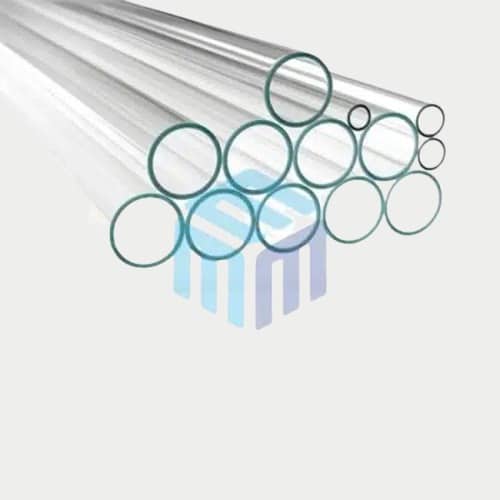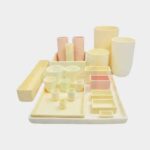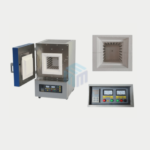When comparing alumina tubes, quartz tubes, and silicon carbide tubes, each material offers distinct advantages and drawbacks based on factors like temperature resistance, mechanical strength, chemical resistance, and cost. Here’s a detailed comparison to help you choose the best option for your specific application:
Temperature Resistance
- Alumina Tubes:
- Withstand temperatures up to 1800°C or more, particularly when made from high-purity alumina (99.7% or higher).
- Suitable for extreme high-temperature environments, such as furnaces and kilns.
- Quartz Tubes:
- Can withstand temperatures up to 1100°C.
- Suitable for moderate temperature applications but not ideal for extremely high temperatures.
- Silicon Carbide Tubes:
- Have the highest temperature resistance of the three, handling temperatures up to 1600–2400°C depending on the grade.
- Ideal for applications involving extremely high heat and harsh environments, such as high-temperature furnaces or combustion chambers.
Mechanical Strength
- Alumina Tubes:
- Excellent mechanical strength and durability, making them resistant to wear and stress at high temperatures.
- Can withstand heavy mechanical and thermal loads.
- Quartz Tubes:
- Fragile compared to alumina and silicon carbide. Quartz is more prone to breaking under mechanical stress or impact, making it less durable.
- Silicon Carbide Tubes:
- Superior mechanical strength and hardness, making them highly resistant to wear, abrasion, and thermal stress.
- Often preferred in environments with high mechanical loads.
Thermal Shock Resistance
- Alumina Tubes:
- Good thermal shock resistance, but not as high as quartz. Rapid heating and cooling can cause cracking if not managed carefully.
- Quartz Tubes:
- Excellent thermal shock resistance. Quartz can withstand sudden changes in temperature without cracking, making it useful in applications where rapid heating or cooling occurs.
- Silicon Carbide Tubes:
- Moderate thermal shock resistance, better than alumina but not as good as quartz. Silicon carbide is tough, but extreme temperature fluctuations can still pose a challenge.
Chemical Resistance
- Alumina Tubes:
- Highly resistant to chemical attack, especially from most acids and bases. Ideal for processes involving reactive chemicals at high temperatures.
- Quartz Tubes:
- High resistance to chemical corrosion, particularly in oxidizing environments. However, it can be attacked by strong alkaline substances at high temperatures.
- Silicon Carbide Tubes:
- Extremely resistant to chemical corrosion from a wide range of chemicals, including strong acids and alkalis. This makes it suitable for highly corrosive environments.
Electrical Insulation
- Alumina Tubes:
- Excellent electrical insulator at high temperatures, making it ideal for applications where electrical insulation is crucial (e.g., thermocouple protection).
- Quartz Tubes:
- Also a good electrical insulator, although alumina is generally preferred when higher thermal stability and electrical insulation are needed.
- Silicon Carbide Tubes:
- Not a good insulator, as silicon carbide has some electrical conductivity, especially at high temperatures. It’s more suitable for applications where electrical conductivity is not a concern.
Cost
- Alumina Tubes:
- Typically, mid-range in terms of cost. They offer a balance between performance and price, particularly for high-temperature applications requiring strength and durability.
- Quartz Tubes:
- Generally more affordable than alumina or silicon carbide, especially for moderate temperature applications. However, the fragility may lead to more frequent replacements.
- Silicon Carbide Tubes:
- More expensive than both alumina and quartz due to their superior properties. However, their durability and high-temperature resistance can justify the cost in demanding applications.
Applications
- Alumina Tubes:
- Used in furnaces, thermocouple protection, kiln furniture, high-temperature processing, powder processing, and scientific research. Read also: Application of Alumina Tubes
- Preferred when both high-temperature resistance and mechanical strength are required.
- Quartz Tubes:
- Used in optics, semiconductor processing, light sources, and moderate temperature applications where thermal shock resistance is critical. Read also: Properties and Applications of Quartz Tubes
- Suitable for applications with rapid heating/cooling cycles but moderate temperature limits.
- Silicon Carbide Tubes:
- Used in high-temperature furnaces, combustion systems, heat exchangers, and abrasive environments.
- Ideal for extreme temperature applications and environments with high mechanical or chemical stress.
Durability and Longevity
- Alumina Tubes:
- High durability, especially in high-temperature or chemically aggressive environments, leading to longer life spans compared to quartz.
- Quartz Tubes:
- Less durable due to their fragility, leading to shorter lifespans in environments with mechanical or thermal stress.
- Silicon Carbide Tubes:
- Highly durable, with excellent resistance to wear and tear, especially in abrasive or chemically corrosive environments.
Summary of Key Differences Alumina Tubes vs. Quartz and Silicon Carbide Tube:
When selecting tubes for high-temperature applications, understanding the material properties is crucial. Alumina, quartz, and silicon carbide tubes each offer unique benefits that suit different industrial and laboratory needs. Here are the key differences to help you choose the right option:
| Property | Alumina Tubes | Quartz Tubes | Silicon Carbide Tubes |
| Max Temperature | Up to 1800°C | Up to 1100°C | Up to 2400°C |
| Mechanical Strength | Excellent | Fragile | Superior |
| Thermal Shock Resistance | Good | Excellent | Moderate |
| Chemical Resistance | High | High (except strong alkalis) | Excellent |
| Electrical Insulation | Excellent | Good | Poor |
| Cost | Mid-range | Affordable | Expensive |
| Applications | High-temp furnaces, sensors | Optics, semiconductors | High-temp furnaces, heat exchangers |
Conclusion:
In conclusion, choosing between alumina, quartz, and silicon carbide tubes depends largely on your specific application requirements. Alumina tubes offer excellent mechanical strength and chemical resistance, making them ideal for high-temperature industrial processes. Quartz tubes excel in thermal shock resistance and optical clarity, perfect for specialized laboratory and semiconductor uses. Silicon carbide tubes provide superior thermal conductivity and durability for extreme environments. Understanding the unique properties of each material will help you select the best tube to ensure efficiency, longevity, and optimal performance in your projects.






